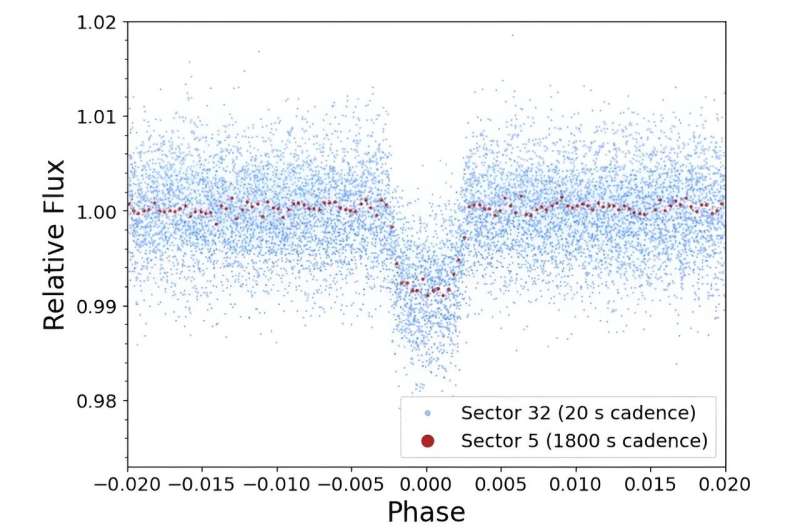August 14, 2024 report
This article has been reviewed according to Science X's editorial process and policies. Editors have highlighted the following attributes while ensuring the content's credibility:
fact-checked
preprint
trusted source
proofread
New massive eccentric brown dwarf discovered

An international team of astronomers has reported the discovery of a new brown dwarf, which received designation TOI-2490 b. The newfound object is about 74 times more massive than Jupiter and orbits a sun-like star on a highly eccentric orbit. The finding was detailed in a paper published August 8 on the pre-print server arXiv.
Brown dwarfs (BDs) are intermediate objects between planets and stars, occupying the mass range between 13 and 80 Jupiter masses (0.012 and 0.076 solar masses). Although many brown dwarfs have been detected to date, these objects orbiting other stars are a rare find.
Now, a group of astronomers led by Beth A. Henderson of the University of Leicester, UK, has found another transiting brown dwarf. Using TESS, a transit signal was identified in the light curve of TOI-2490—a solar-like G-type main sequence star located some 872.5 light years away. The brown dwarf nature of this signal was confirmed by follow-up photometric observations and radial velocity measurements.
"In this paper, we report the discovery of TOI-2490b, a new, highly eccentric transiting brown dwarf discovered using TESS," the researchers wrote.
According to the study, TOI-2490 b is the size of Jupiter, while its mass is about 73.6 Jupiter masses, which yields a density at a level of 91.6 g/cm3. The brown dwarf orbits the host star every 60.33 days, at a distance of approximately 0.31 AU from it. The equilibrium temperature of TOI-2490 b is estimated to be 464.2 K.
The observations found that TOI-2490 b has an orbital eccentricity of approximately 0.78. Therefore, the astronomers noted that this result makes TOI-2490 b the most eccentric brown dwarf in the so-called BD desert—the lack of brown dwarfs around main sequence stars within about 3 AU from the host.
By analyzing the collected data, the authors of the paper concluded that TOI-2490 b likely formed with this high level of eccentricity. They added that this brown dwarf likely formed via stellar formation mechanisms and is assumed to have a similar metallicity and age to its parent star.
The study also found that the irradiation temperature of TOI-2490 b changes by about 1,000 K (from 545 to 1,552 K) as it travels around its orbit. However, further observations are required in order to fully understand such an extreme change.
When it comes to the properties of the host star, TOI-2490, it is as massive as the sun, and its radius is measured to be approximately 1.1 solar radii. The star is estimated to be 7.9 billion years old, has a metallicity at a level of 0.32 dex, and its effective temperature was found to be 5,558 K.
More information: Beth A. Henderson et al, TOI-2490b- The most eccentric brown dwarf transiting in the brown dwarf desert, arXiv (2024). DOI: 10.48550/arxiv.2408.04475
Journal information: arXiv
© 2024 Science X Network




















